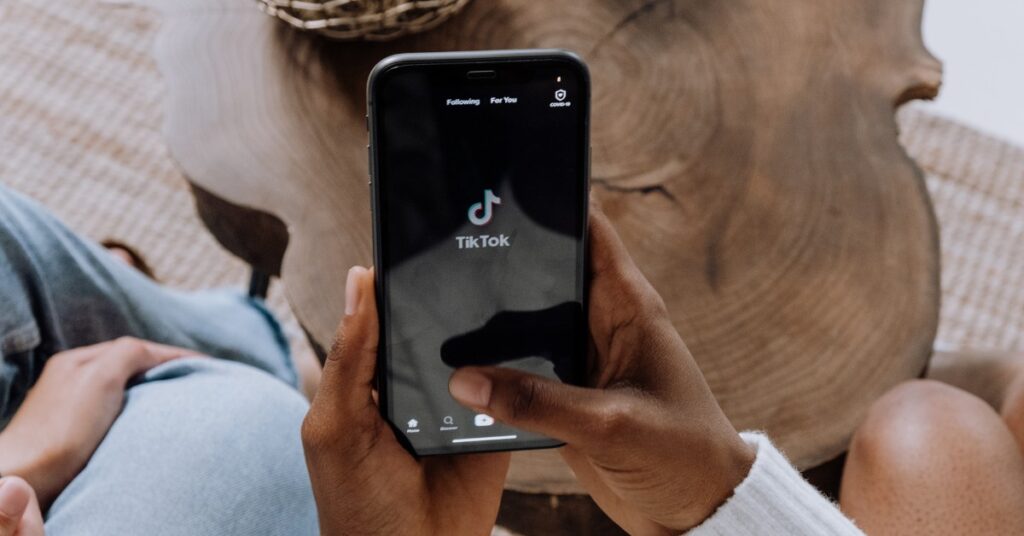Why TikTok Sells Books
Peeling Back the Psychology Behind TikTok

TikTok is a powerhouse for selling books. But what is it about the platform that makes it so effective for authors? The success of the platform isn’t a coincidence. Here, we go beyond the surface level to peel back the psychology behind why it works.
Delving into the deep recesses of the human brain, it becomes clear there are several psychological factors at play. Chief among them are: the dopamine-desire effect, low buyer intent and our aversion to being sold to, and demonstration marketing (one of the oldest tricks in the marketing book).
The Dopamine-Driven Discovery Channel
At the heart of TikTok’s allure is the ability to trigger the dopamine-desire effect, creating a constant sense of discovery. Dopamine is a neurotransmitter responsible for feelings of pleasure and reward, and TikTok cleverly taps into this reward system.
Every time users swipe up to a new, unpredictable video, there’s a little dopamine hit, a reward for their curiosity. This constant novelty-seeking behaviour keeps users engaged and addicted to the platform, possibly scrolling for hours on end.
With endless scrolling, the never-ending feed of short videos seamlessly transitioning from one to the next triggers a phenomenon known as the “scrolling loop.” Users can’t resist swiping up to see what comes next, a behaviour closely linked to the release of dopamine. This loop keeps users engaged for extended periods, making it an ideal platform for authors to capture the attention of potential readers.
TikTok also capitalises on the modern consumer’s short attention span. Snackable content, the platform’s primary content format, consists of brief videos, typically ranging from 15 to 60 seconds. This bite-sized approach perfectly caters to users who prefer consuming information in quick, entertaining bursts rather than lengthy, in-depth content.
For authors, this means they have a limited window to capture and maintain the audience’s attention, pushing them to create concise and captivating book-related content. But by creating engaging content that either entertains, informs, or provides value, authors can tap into this dopamine cycle. A well-crafted TikTok video showcasing a book’s theme, a dramatic reading, or a behind-the-scenes look at the writing process can be the hook that leads to a sale.
Circumnavigating Reactance: The Low Buyer Intent Advantage
Not all authors are comfortable with the idea of selling and marketing themselves. Luckily, TikTok’s primary purpose isn’t centred around driving immediate purchases the way Amazon does. Instead, TikTok is a platform for entertainment, creativity, and community engagement. Users turn to the platform for humour, inspiration, education, distraction, or plain boredom. They aren’t actively seeking to buy products; they don’t log in intending to buy anything, which paradoxically, makes them more open to marketing messages.
Compare this to browsers of the Amazon store. They’re there to buy something that solves a problem, be it a book, a birthday present, or a Wendy house, thus their buying intent is higher and they know they’re going to be sold to.
So this concept of “Low Buyer Intent” on TikTok creates an environment where authors can subtly promote their books without the hard or blatant selling. Speaking of hard selling, we humans crave autonomy. We have a negative reaction to being sold to or told what to do. Psychologists call this reactance.
By emphasising personal experiences, emotions, and building relatable connections, authors can introduce their books in a non-intrusive manner; effectively circumnavigating the reactance individuals often experience when confronted with direct and overt sales tactics.
The Power of Demonstration: Show, Don’t Tell
Using demonstration as a marketing tactic dates back to 1840, when showman P.T. Barnum used live demonstrations to promote his circus attractions. Barnum would often have his performers perform feats of strength or skill in front of potential customers, in order to convince them to buy tickets to the show.
Door-to-door salesmen also began using demonstrations in the mid-1800s to sell products like household goods and farm equipment. Salesmen would often carry samples of their products with them, and would demonstrate how to use them in front of potential customers.
Perhaps one of the most famous uses of demonstration marketing was Elisha Otis. He was an American inventor and businessman who is best known for his invention of the safety elevator. In 1852, Otis publicly demonstrated his safety elevator at the Crystal Palace in New York City. He stood on the platform of the elevator, 30 feet in the air, and had an assistant cut the hoisting rope with an axe. The elevator dropped only a few inches before the safety brake kicked in and stopped it. The crowd was amazed, and Otis’s safety elevator quickly became the standard for passenger elevators around the world.
The ‘Does it Blend?’ series on YouTube became a huge hit — and very profitable — by demonstrating the power of Blendtec blenders in a way that was both informative and entertaining.
These are all examples of how demonstration is used in marketing, and helps to build trust with potential customers. When people see a product or service in action, they are more likely to believe that it works, and that it’s worth their money.
Sharing videos on TikTok using visual storytelling, snippets that highlight the book’s content, page flips, or showcasing reader testimonials and reactions are all ways to harness the power of demonstration. These visual and interactive elements help potential readers connect more deeply with the content, making it not just a book but an experience.
It makes it easier for viewers to visualise themselves engaging with and owning the books being discussed. The key is to show potential readers what they’ll gain from the book — be it knowledge, entertainment, or emotional resonance.
Conclusion
While there are other factors that contribute to the success of TikTok, such as the community-oriented engagement and algorithmic magic that creates a sense of belonging, TikTok enables authors to build genuine connections with their audience.
The dopamine-desire effect creates a sense of excitement and anticipation, while the low buyer intent and avoidance of overt sales tactics decrease resistance among viewers. Moreover, the use of demonstration marketing successfully bridges the gap between authors and viewers, enabling a more immersive and relatable book discovery experience.
By understanding and leveraging the psychological underpinnings of the platform, authors can craft a marketing strategy that feels less like a sales pitch and more like a part of the user’s daily dose of entertainment and discovery. In the world of TikTok, those dopamine hits can translate into book hits, and ultimately, a successful self-publishing career.
Angela Archer
Angela Archer is a Sci-Fi and horror author. She struggled with marketing her books until she found out about copywriting. And for the last three years she’s been working as a copywriter known for her knack of story-selling. She specialises in working with entrepreneurs who use books as part of their marketing funnel. You can find out more about her at The Book Funnel Lady: http://www.thebookfunnellady.com
Grab Your SPF Freebies!
Sign up to receive your SPF starter package, which includes a free 3 part video series on getting started with FB ads, and inspirational and educational weekly emails.


